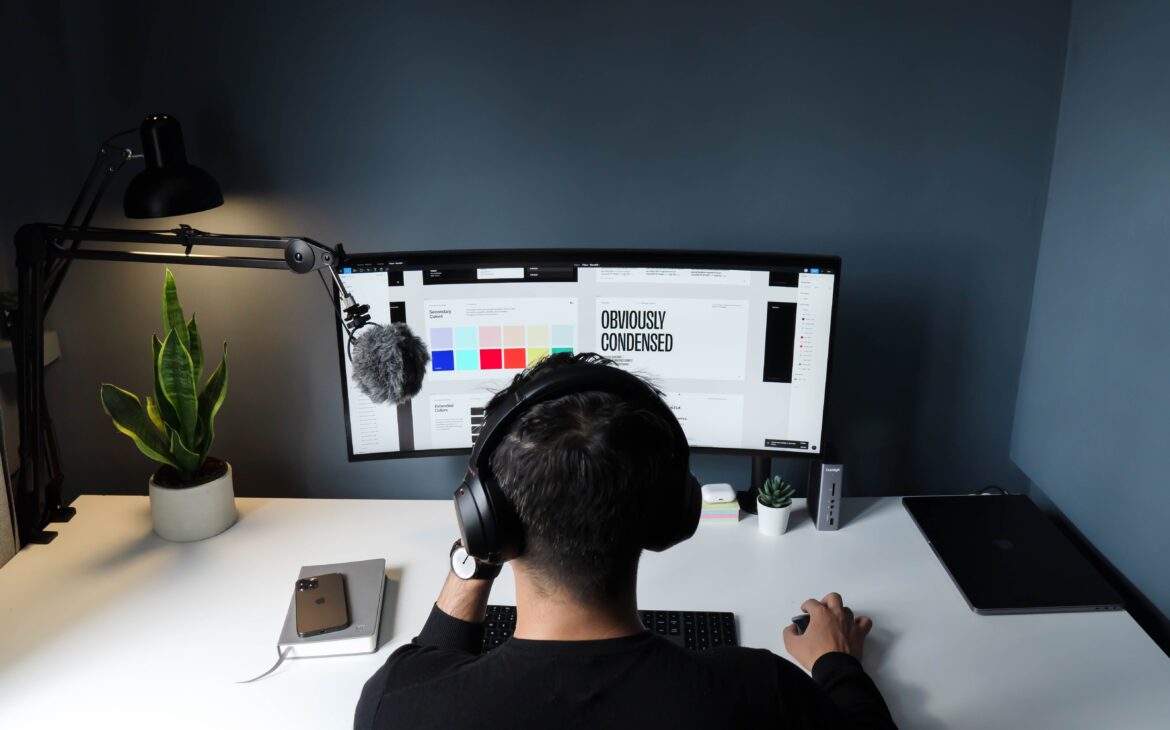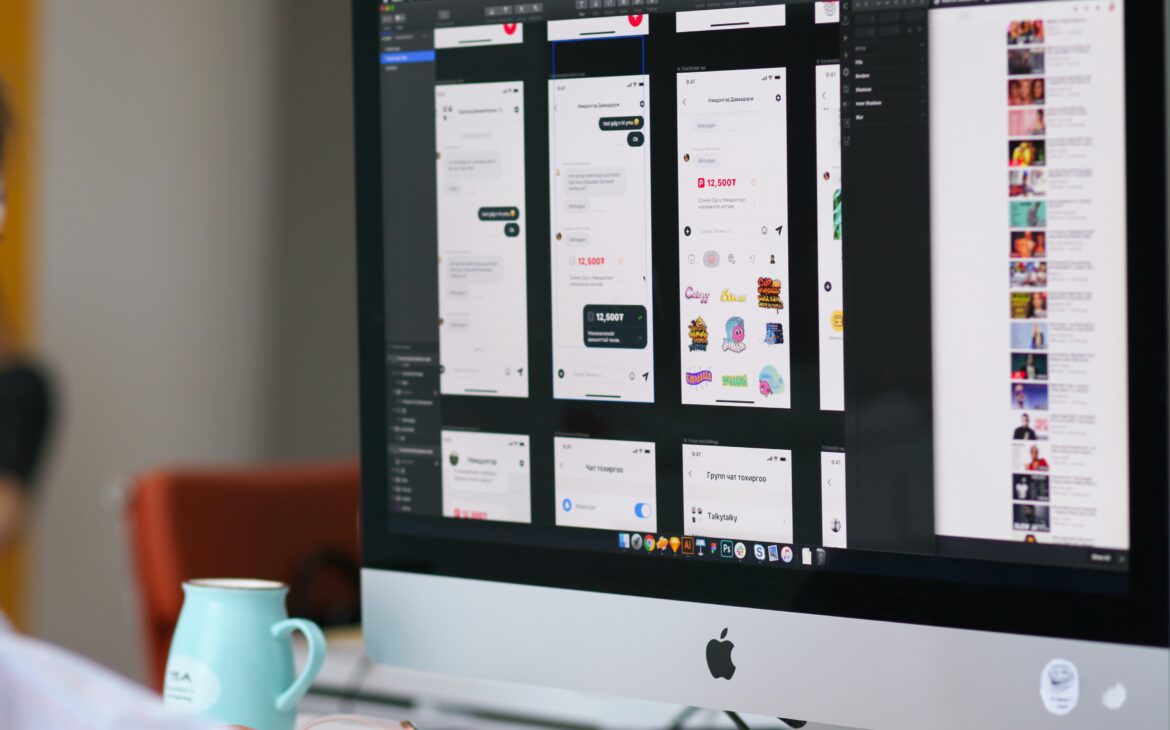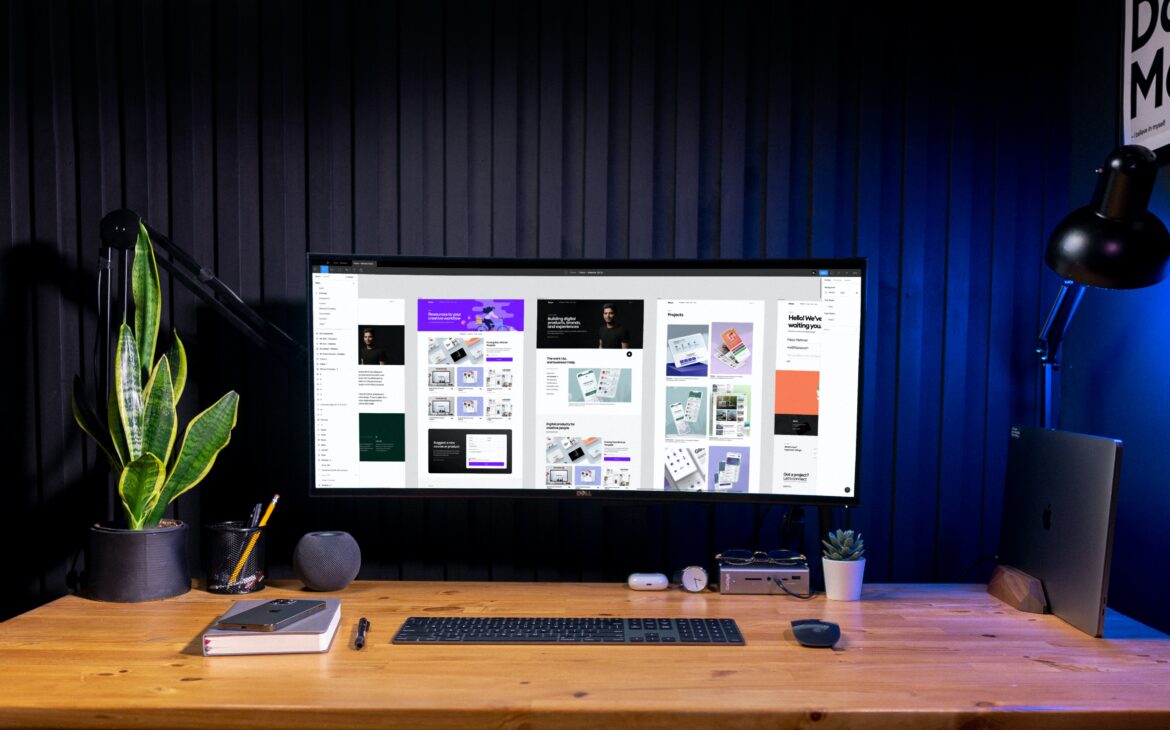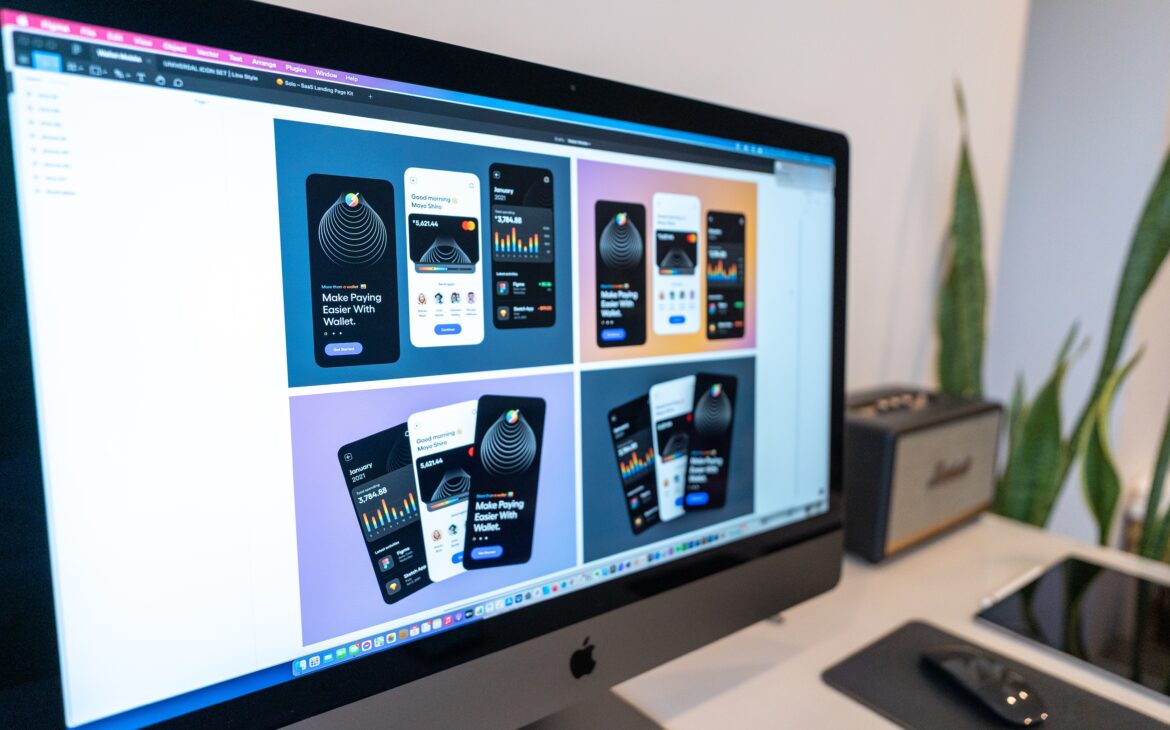From Dull to Dynamic: The Secrets to Becoming a Master Graphic Designer
Graphic design has come a long way, transforming from a humble craft to a dynamic and influential industry. In today’s visually-driven world, mastering the art of graphic design is essential for creating impactful and engaging content. Whether you are a budding designer or seeking to enhance your existing skills, this article will uncover the secrets to becoming a master graphic designer.
From understanding the history and principles of design to harnessing creativity and utilizing modern tools, we will explore the key elements that contribute to captivating and effective designs. So, let’s embark on this journey to transform dull designs into dynamic masterpieces.
1. Introduction: The Evolution of Graphic Design
The History of Graphic Design: From Print to Digital
Graphic design has come a long way since the days of hand-drawn illustrations and print media. With the rise of technology, graphic design has shifted from physical formats to the digital realm. From flyers and posters to websites and social media, graphic designers are now shaping the visual landscape of the modern world. Understanding the evolution of graphic design is crucial for mastering its ever-changing techniques and tools.
The Role of Graphic Design in Modern Society
In today’s visually-driven society, graphic design plays a vital role in both personal and professional realms. From creating eye-catching logos and branding materials to designing user-friendly websites and captivating social media content, graphic designers have the power to shape how the world perceives brands and messages. By understanding the importance of effective visual communication, aspiring graphic designers can harness their creativity to make a lasting impact.

2. Mastering the Fundamentals: Developing a Strong Design Foundation
Understanding Design Principles: Balance, Contrast, and Hierarchy
To become a master graphic designer, one must first grasp the fundamental principles of design. Balance, contrast, and hierarchy are not just fancy words thrown around in art school lectures; they are the building blocks of captivating visual compositions. By understanding how to create a harmonious balance, utilize contrasting elements, and establish a clear visual hierarchy, designers can create designs that are both visually pleasing and effective in conveying their intended message.
Exploring Composition: Rule of Thirds and Grid Systems
Composition is key when it comes to graphic design. Two essential techniques that designers must master are the Rule of Thirds and Grid Systems. The Rule of Thirds helps designers create visually appealing layouts by dividing the design space into a grid of nine equal parts and placing key elements along the lines or at the intersections. Grid Systems, on the other hand, provide a structured framework for organizing content and maintaining consistency throughout a design. By understanding and implementing these composition techniques, designers can create visually dynamic and well-structured designs.
3. The Power of Visual Communication: Understanding the Psychology of Design
The Science of Color: Using Color Theory to Evoke Emotions
Colours have the power to evoke emotions and influence human behaviour. Understanding colour psychology and how different hues can convey specific emotions is crucial for effective graphic design. Whether it’s using warm colours to create a sense of excitement or cool tones to evoke calmness and trust, designers can strategically choose colours to enhance the overall message and impact of their designs.
Typography and Branding: Choosing Fonts that Convey the Right Message
Typography plays a significant role in branding and visual communication. Choosing the right fonts can convey personality, style, and professionalism. From classic serif fonts to modern sans-serif typefaces, each font has its unique character. By selecting fonts that align with the brand’s identity and message, designers can create designs that effectively communicate and reinforce the desired brand image.
Get up to 70% Discount on Amazon Electronic Products

4. Embracing Creativity: Techniques and Strategies for Sparking Inspiration
Overcoming Creative Blocks: Tips for Finding Inspiration
Even the most talented graphic designers experience creative blocks from time to time. When inspiration seems elusive, it’s essential to find ways to overcome these obstacles. Whether it’s taking a break, exploring different art forms, or seeking inspiration from other designers, embracing creativity requires a willingness to step outside of one’s comfort zone and explore new avenues.
Experimenting with Different Design Styles and Techniques
Graphic design is not a one-size-fits-all field. It provides countless opportunities for experimentation and exploration. Trying out different design styles, techniques, and tools can help designers discover their unique artistic voice and develop a personal style. By embracing experimentation, designers can push their creative boundaries and create truly dynamic and original designs.
With a solid understanding of the history, fundamentals, psychology, and creativity of graphic design, aspiring designers can set themselves on the path to becoming true masters of their craft. So, embrace your creativity, experiment fearlessly, and ignite your design journey with passion and determination.
5. Mastering the Tools of the Trade: Navigating Graphic Design Software and Technology
Introduction to Graphic Design Software: Photoshop, Illustrator, and InDesign
Welcome to the world of graphic design where creating eye-catching visuals is the name of the game. To become a master graphic designer, you need to become best buddies with some powerful software. Photoshop, Illustrator, and InDesign are the holy trinity of graphic design tools, and getting to know them like the back of your hand is essential. From manipulating images to creating stunning illustrations and laying out beautiful publications, these programs are your trusty sidekicks in your creative adventures.
Utilizing Online Design Tools and Resources
But wait, there’s more! In addition to the mighty trinity, there’s a whole world of online design tools and resources waiting to be explored. Canva, Figma, and Sketch are just a few examples of the many platforms that can make your design process smoother and your creations even more impressive. So go ahead, dive into the digital realm, and discover the wonders that await you there. Trust us, they’ll make your life a whole lot easier.

6. Crafting Effective Designs: The Art of Composition and Layout
Creating Visual Hierarchy: Importance of Focal Points and Visual Flow
Now that you’ve mastered the tools, it’s time to unleash your creativity and create designs that captivate your audience. The secret sauce lies in understanding the art of composition and layout. Visual hierarchy is the key ingredient here. By strategically placing focal points and guiding the viewer’s eye with clever visual flow, you can create designs that are both visually appealing and effective in communicating your message. So, let your creative juices flow, but remember to direct them with purpose.
Balancing Elements: Negative Space and Proportions
While adding elements is important, knowing when to hold back is equally crucial. Negative space is the unsung hero of design, providing breathing room and balance to your compositions. By mastering the art of negative space and proportion, you can achieve a harmonious and aesthetically pleasing design. So, embrace the power of space and strike the perfect balance between elements. It’s like finding the sweet spot between a crowded party and a deserted island.
7. The Role of Colors and Typography: Creating Impactful Designs
Colour Psychology: Choosing the Right Color Scheme for Different Projects
Prepare to dive into the world of colors where shades, tints, and tones reign supreme. Colour psychology plays a crucial role in evoking emotions and setting the mood for your designs. Understanding the psychology behind different colours and choosing the right colour scheme for each project can take your designs from meh to marvellous. So, pick those hues wisely and watch as your designs wield the power of the rainbow.
Typography Trends and Techniques: Pairing Fonts for Maximum Impact
Typography is more than just picking a fancy font. It’s an art form that can elevate your designs to new heights. From classic serifs to modern sans-serifs, there’s a plethora of fonts waiting for you to explore. But remember, it’s all about finding the perfect pairing that creates maximum impact. So, experiment, play around, and let your creativity run wild. After all, your design is only as good as the font that speaks (or shouts) from within.

8. Beyond Graphic Design: Collaborating with Clients and Building a Successful Career
Effective Communication with Clients: Understanding Their Vision and Needs
Being a master graphic designer is not just about creating beautiful designs; it’s also about working with clients to bring their visions to life. Effective communication is the secret ingredient here. You need to truly understand your client’s vision and needs to create designs that exceed their expectations. So, brush up on your active listening skills and develop your ability to speak the language of creativity and collaboration.
Conclusion
Last but not least, building a successful graphic design career requires more than just talent. It’s about showcasing your skills and making connections. Building a killer portfolio that showcases your best work is essential. And don’t forget to network like a pro, both online and offline. Attend design events, join online communities, and make friends in the industry. You never know when that next big opportunity might come knocking at your door. So, put yourself out there and let your creativity shine.
In conclusion, becoming a master graphic designer requires a combination of technical expertise, creative thinking, and a deep understanding of the principles that drive effective visual communication. By embracing the evolution of graphic design, mastering the fundamentals, and embracing creativity, you can elevate your designs from dull to dynamic. Additionally, staying up-to-date with the latest tools and technologies, understanding the psychology of design, and fostering strong client relationships will help you build a successful career in this ever-evolving field. So, go forth, unleash your creativity, and let your designs captivate the world.

FAQ
1. How long does it take to become a master graphic designer?
There is no fixed timeline for becoming a master graphic designer as it depends on various factors such as your dedication, learning abilities, and practice. However, with consistent effort, it is possible to develop a strong foundation within a year or two of focused study and practice. Continuous learning and staying updated with industry trends are also essential to continuously improve your skills.
2. Do I need formal education or a degree to become a successful graphic designer?
While a formal education or degree in graphic design can provide a solid foundation, it is not a prerequisite for success. Many successful graphic designers have built their careers through self-learning, online courses, workshops, and real-world practice. It is more important to focus on developing a strong portfolio that showcases your skills and creativity, as clients and employers often prioritize talent and practical experience.
3. How do I find inspiration when facing a creative block?
Creative blocks are common in any creative field, including graphic design. To overcome them, try exploring different sources of inspiration such as art galleries, nature, books, movies, or online design communities. Additionally, experimenting with different design techniques, taking breaks, collaborating with other creatives, and seeking feedback can help spark new ideas and breakthrough creative stagnation.
4. How do I stay updated with the latest graphic design trends and technologies?
Staying updated with the latest trends and technologies is crucial for every graphic designer. To do so, follow design blogs and websites, participate in online design forums and communities, attend design conferences and workshops, and engage with other designers through social media platforms. Additionally, regularly exploring design inspiration websites and studying the work of renowned designers can help you stay current and continuously evolve your skills.

Thank you for reading 🙂
Get up to 70% Discount on Amazon Electronic Products
If you want to build your website at an affordable price contact: www.nextr.in
Read this: Top 8 Apps Every Entrepreneur Needs


















